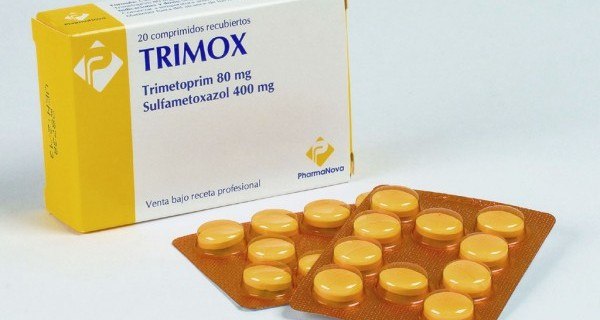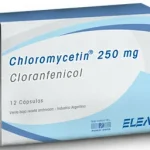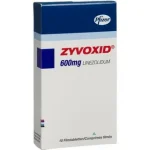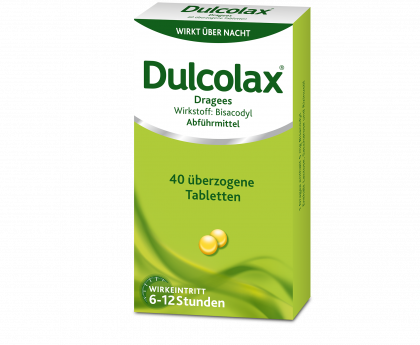Trimox, with the active ingredient Amoxicillin, is a widely used penicillin antibiotic that treats a variety of bacterial infections, including those of the ear, nose, throat, urinary tract, and skin. It works by inhibiting the synthesis of bacterial cell walls, leading to the destruction of the bacteria. Trimox is available in several forms, such as tablets, capsules, and oral suspensions, making it suitable for patients of all ages. It is generally well-tolerated, but potential side effects include gastrointestinal upset, allergic reactions, and, rarely, antibiotic-associated colitis. Completing the full course of Trimox is crucial to ensure the infection is fully eradicated and to prevent the development of antibiotic-resistant bacteria.


Trimox is particularly effective in treating common bacterial infections like ear infections, strep throat, and sinusitis. Its ability to quickly and efficiently target the bacteria causing these conditions makes it a preferred choice among healthcare providers. The proven efficacy in managing these everyday infections ensures fast relief and recovery for patients.

Trimox is generally well-tolerated, with fewer side effects compared to other antibiotics. This makes it suitable for a wide range of patients, including children and those with sensitive stomachs. The mild nature of side effects ensures that patients can complete their course of treatment with minimal discomfort, leading to better adherence and effective resolution of the infection.

Trimox is available in various forms, including tablets, capsules, and oral suspensions, allowing for flexible administration based on patient needs. This versatility makes it easier for patients to adhere to their treatment regimen, especially for children or those who have difficulty swallowing pills. The availability of different forms enhances its accessibility and convenience.
Trimox – Product Description
Overview:
Trimox (Amoxicillin) is a penicillin-class antibiotic commonly used to treat a variety of bacterial infections. It works by inhibiting the construction of bacterial cell walls, effectively killing the bacteria and halting the infection. Trimox is especially effective against infections like otitis media, strep throat, and urinary tract infections. Available in multiple forms, including tablets, capsules, and oral suspensions, Trimox offers flexibility in administration, making it suitable for both adults and children. The medication is generally well-tolerated, with mild side effects like nausea or diarrhea. Its effectiveness, combined with its safety profile, makes Trimox a trusted choice for treating bacterial infections.Indications:
Trimox is indicated for the treatment of various bacterial infections, including those affecting the ear (such as otitis media), respiratory tract (like strep throat), and urinary tract. It is also used to treat skin infections and, in combination with other medications, to manage H. pylori infections that cause ulcers. Trimox’s effectiveness against a broad range of bacteria makes it a versatile option in clinical practice, particularly for infections where the causative organism is known or suspected to be sensitive to amoxicillin.How to Use:
Trimox should be taken exactly as prescribed by a healthcare provider. It can be taken with or without food, although taking it with food may help reduce stomach upset. The dosage and length of treatment depend on the type and severity of the infection. For the oral suspension, shake the bottle well before each dose, and measure the dose carefully using a dosing spoon or oral syringe. It’s important to complete the entire course of Trimox, even if symptoms improve, to fully eradicate the infection and prevent the development of antibiotic-resistant bacteria.Advantages:
Trimox offers several advantages, including its broad-spectrum efficacy against a wide range of bacterial infections, which ensures comprehensive treatment. The medication is available in various forms, making it convenient for patients of all ages, including children. Additionally, Trimox’s generally mild side effect profile makes it well-tolerated by most patients, reducing the likelihood of treatment discontinuation due to adverse effects. This combination of effectiveness, safety, and convenience makes Trimox a highly regarded antibiotic in clinical use.Conclusion:
Trimox (Amoxicillin) is a highly effective and well-tolerated antibiotic that plays a crucial role in treating a wide variety of bacterial infections. Its broad-spectrum activity, combined with convenient dosage forms, ensures it meets the needs of diverse patient populations. Adhering to the prescribed course of treatment is essential for complete recovery and to prevent antibiotic resistance. With its proven track record and safety profile, Trimox remains a trusted option for managing bacterial infections effectively.Composition:
Trimox contains Amoxicillin as its active ingredient, a penicillin-class antibiotic. In its various forms, Trimox may also contain inactive ingredients like magnesium stearate, microcrystalline cellulose, and flavoring agents in the suspension form to improve palatability, especially for children. The composition is designed to ensure the stability, efficacy, and patient acceptability of the medication, making Trimox a reliable choice for treating bacterial infections.Note:
Patients using Trimox should inform their healthcare provider if they have a history of allergies to penicillin or cephalosporins, as allergic reactions are possible. It’s also important to take the medication at evenly spaced intervals to maintain effective levels of the antibiotic in the body. Patients should complete the full course of Trimox, even if they start feeling better before the medication is finished. For those using the oral suspension, it’s important to store it in the refrigerator and discard any unused portion after 14 days. As with all antibiotics, misuse or overuse can lead to the development of resistant bacteria.
Trimox: Reliable Antibiotic for Common Infections
In this informative video, we explore Trimox.
Why us?

Authenticity Guaranteed:
We ensure that every batch of Floxin is sourced from trusted manufacturers, providing you with genuine medication that meets the highest quality standards.

Competitive Pricing:
Our pricing is designed to make essential medications like Floxin accessible to all, offering competitive rates and frequent discounts to help you manage your health affordably.

Reliable Customer Support:
Our dedicated team is available to assist with any questions or concerns you may have about purchasing and using Floxin, ensuring a smooth and confident buying experience.



